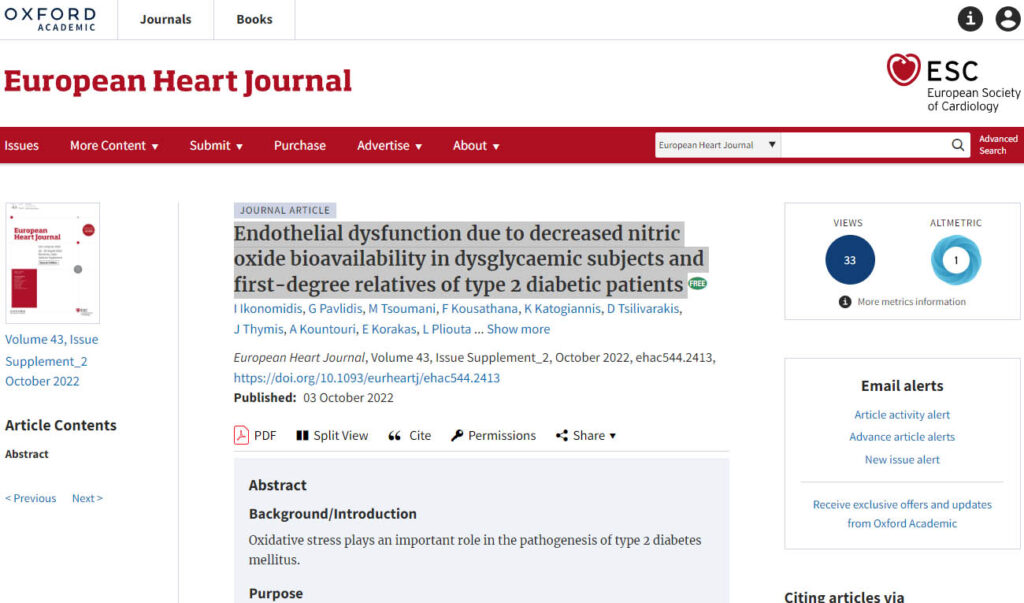Abstract
Background/Introduction
Oxidative stress plays an important role in the pathogenesis of type 2 diabetes mellitus.
Purpose
We aimed to investigate oxidative stress and nitrites/nitrates concentrations at baseline and during postprandial hyperglycaemia in 40 first-degree relatives (FDR) of type 2 diabetic patients with normal oral glucose test (OGTT), 40 subjects with abnormal OGTT (dysglycaemic) and 20 subjects with normal OGTT without parental history of diabetes (normoglycaemic).
Methods
Perfused boundary region (PBR) of the sublingual microvessels with a diameter 5–25μm (Microscan, Glycocheck), a marker of endothelial glycocalyx integrity, coronary flow reserve (CFR) in the distal left anterior descending coronary artery, left ventricular global longitudinal strain (GLS), malondialdehyde (MDA), protein carbonyls (PC) and nitrites/nitrates plasma levels were assessed at 0 and 120 min of a 2-hour OGTT. Insulin sensitivity was evaluated using Matsuda and insulin sensitivity index (ISI).
Results
In all subjects, there were no significant changes in MDA and PC at 120 min after OGTT (p>0.05). Compared with normoglycaemic subjects, in FDR and dysglycaemic subjects, nitrites/nitrates levels were significantly decreased at 120 min (−24% versus −30% versus −3%, respectively) with a parallel increase in PBR (+7% versus +10% versus −3%) and a reduction in CFR (−11% versus −14% versus −6%) and GLS (−4% versus −4% versus +0.1%) (p<0.05 for all comparisons). The percent reduction of nitrites/nitrates levels was associated with abnormal values of Matsuda and ISI, reversely related with the percent increase of PBR (r=−0.60, p=0.001) and positively related with the percent decrease of CFR (r=0.39, p=0.038) and GLS (r=0.48, p=0.008).
Conclusion
Insulin resistance determines acute endothelial responses during OGTT leading to reduced nitric oxide production with resultant coronary and myocardial dysfunction in FDR and dysglycaemic subjects.


